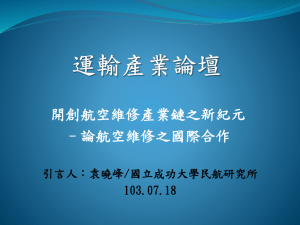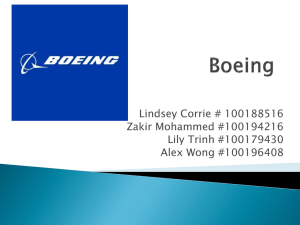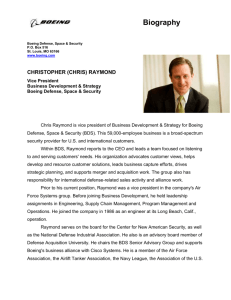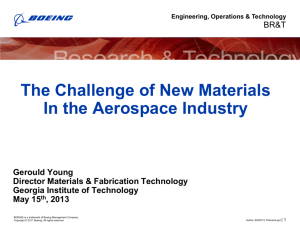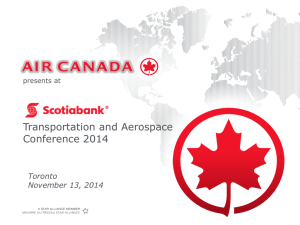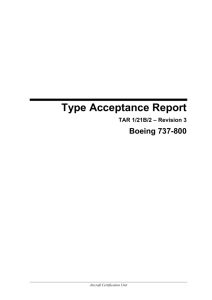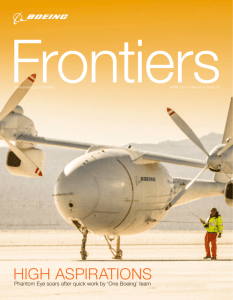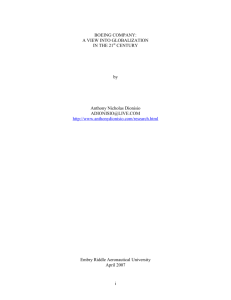Seattle 1:2 Executive Summary For the last 40 years, Boeing and
advertisement
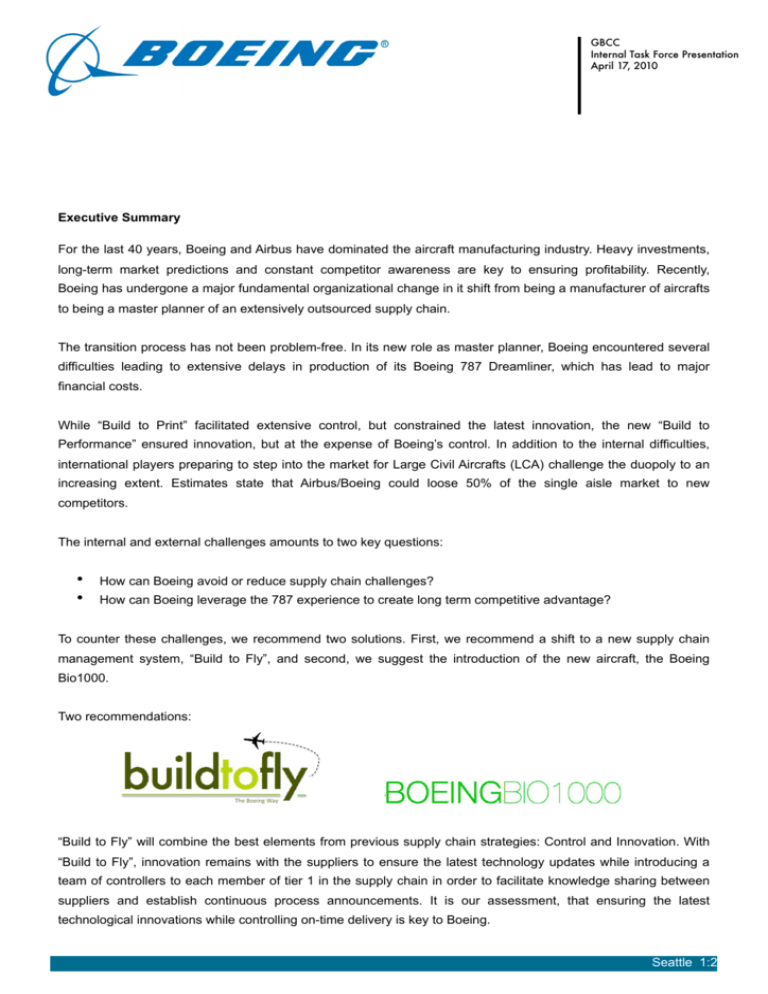
GBCC Internal Task Force Presentation April 17, 2010 Executive Summary For the last 40 years, Boeing and Airbus have dominated the aircraft manufacturing industry. Heavy investments, long-term market predictions and constant competitor awareness are key to ensuring profitability. Recently, Boeing has undergone a major fundamental organizational change in it shift from being a manufacturer of aircrafts to being a master planner of an extensively outsourced supply chain. The transition process has not been problem-free. In its new role as master planner, Boeing encountered several difficulties leading to extensive delays in production of its Boeing 787 Dreamliner, which has lead to major financial costs. While “Build to Print” facilitated extensive control, but constrained the latest innovation, the new “Build to Performance” ensured innovation, but at the expense of Boeing’s control. In addition to the internal difficulties, international players preparing to step into the market for Large Civil Aircrafts (LCA) challenge the duopoly to an increasing extent. Estimates state that Airbus/Boeing could loose 50% of the single aisle market to new competitors. The internal and external challenges amounts to two key questions: • • How can Boeing avoid or reduce supply chain challenges? How can Boeing leverage the 787 experience to create long term competitive advantage? To counter these challenges, we recommend two solutions. First, we recommend a shift to a new supply chain management system, “Build to Fly”, and second, we suggest the introduction of the new aircraft, the Boeing Bio1000. Two recommendations: !"#$%&#'()$*+,$ “Build to Fly” will combine the best elements from previous supply chain strategies: Control and Innovation. With “Build to Fly”, innovation remains with the suppliers to ensure the latest technology updates while introducing a team of controllers to each member of tier 1 in the supply chain in order to facilitate knowledge sharing between suppliers and establish continuous process announcements. It is our assessment, that ensuring the latest technological innovations while controlling on-time delivery is key to Boeing. Seattle 1:2 Secondly, in the next 20-30 years, a major trend within aircraft will be short-ranged aircrafts with a limited number of passengers. With the new Boeing BIO1000, Boeing will tap into this demand with a new short-ranged, fuel efficient aircraft equipped with the latest technology, which is made possible by the “Build to Fly” strategy. A taskforce will already be established within the next year, but due to cash flow constraints, the development process will not take place until 2015. The new aircraft will have an expected launch in 2025. The two initiatives, “Build to Fly” and Boeing BIO1000 will not only ensure Boeing the most innovative flights with on-time delivery. We estimate net value of creating the "Build to Fly" to be around $1.235 mill. This number is based on total savings of $1.645 mill and costs of implementation at $410 mill. Replacing the aging Boeing 737 aircraft with the new sustainable Boeing BIO1000 allows Boeing to keep market shares in the long run allowing for a positive NPV of around $2.079 mill for the Boeing BIO1000 project. Together the two proposals ensures the Boeing stays a crucial part of a more sustainable tomorrow and strengthen the position as the number one aircraft producer. Seattle 2:2




